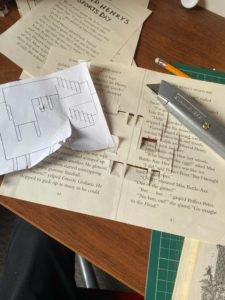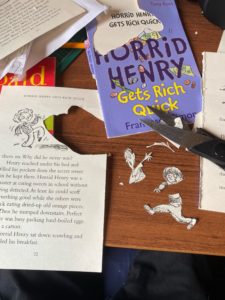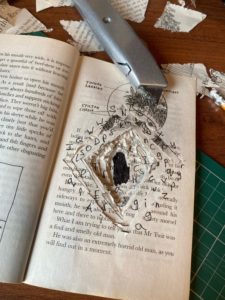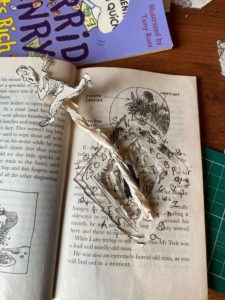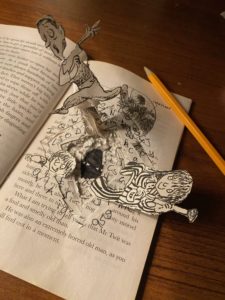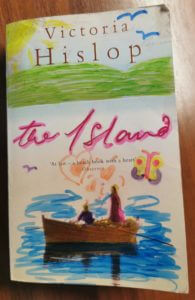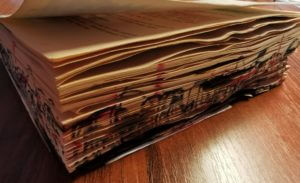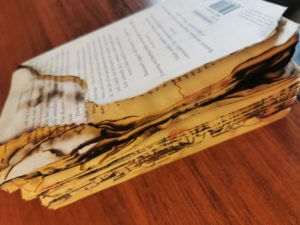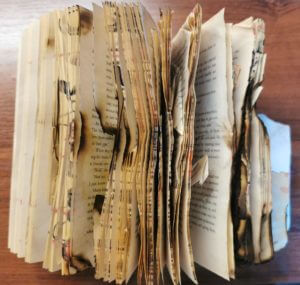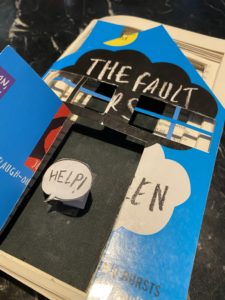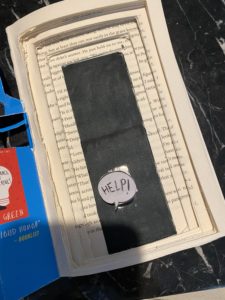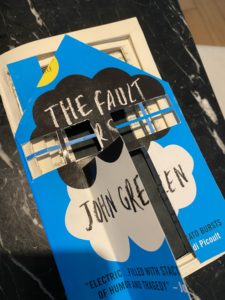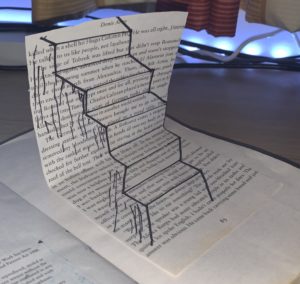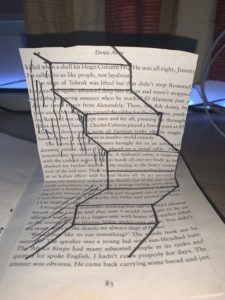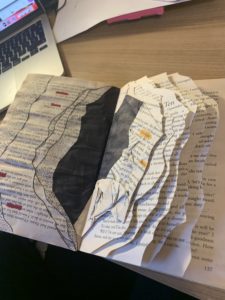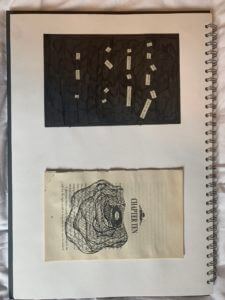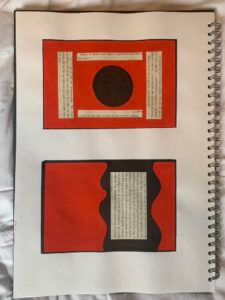Brief:
A client has written a novel and asks you to work on the design of the book. He wants you to develop a concept that enhances and brings forward the visual dimension of the story. He does not request a traditional design, but a book that helps to develop the narrative through its form and materiality.
- Loop: a man picks up a novel and starts reading it sitting in an armchair with his back to the door. He sinks into the novel, in which a man and a woman meet in a cabin. They are lovers, but their attention is focused on murder: the man is going to kill the woman’s husband. Following her instructions, knife in hand, the man goes inside and sees his victim: a man who is sitting in an armchair reading a book with his back to the door.
Process:
- I had the idea to glue the two covers together to simulate the never ending narrative of this storyline, then to draw or cut an impression of the man reading in his chair throughout the pages. However I found that the binding of this book was quite strong and so rather than the pages spraying open evenly in a circular way when the covers were pulled together, instead few of the pages followed. This was not the desired effect so I experimented with removing the cover and slicing strips down the glue of the spine. I hoped this would give it more flexibility and allow the pages to look like one continuous loop. This proved quite difficult to execute and drastically weakened the spine so I decided to adjust the design.
- Instead I started to cut away the pages to develop a portrait of a mans face. At first I was cutting very carefully a group of pages at a time. But this meant I had the same design running through the whole book. I quickly realised I could easily carve the pages, as if shaving cuttings off of wood, which made the face more 3D. I played with a few different ways of bringing shape and definition to the face also through using layers.
- My initial idea imagined a complete head cut out to look 3D, so I had to keep in mind that this would be more of a slither of the centre line down a mans face. Being the section of the face with many main features I was confident that the shape would still be legible and reflect that of a portrait. My ability to bring in definition and round shape was a slightly limited due the thickness/thinness of the book. To adapt to this I cut some block layers from the front and the back of the book for more stark and abrupt shaping. I really like the effect of this, especially when it is played with the light.
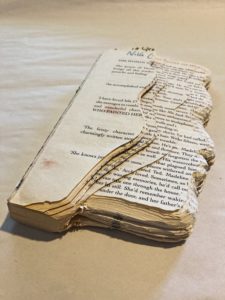
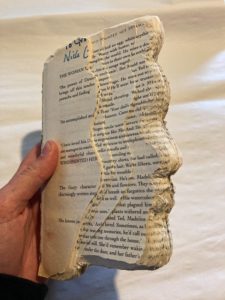
![]()
![]()
![]()
Reflections:
I really like how the light plays with the shapes of the pages in this book to enhance the design and mirror the storyline. As each page is turned, the shadows echo the message of the book and the intended design. To further this design I would like to explore the impact of colour and shading applied directly to the pages to make each page turn more intriguing to turn. This would also aid in bringing more detailed definition to the structure of the face.


